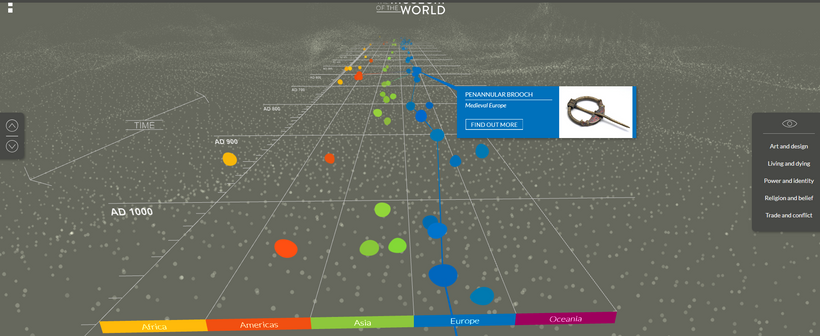Access to heritage allows visitors to view and interact with it and is part of education and promotion. Museums are not just pretty storage areas for old things. Thankfully the field of museology has advanced to provide multiple access points for all.
The basics
The visitor to a museum or site wants to know the following at the door.
- What is here to see?
- Where can I get a guide or floor plan?
- Where are the bathrooms?
- Where can I purchase refreshments?
- Where is the gift shop?
To answer, first you need to consider several things. A site or exhibition area is a space for education, carefully planned and reflected every step of the way. To offer the best visitor experience, you have done your Values Analysis and Management Plan.
The Values Analysis will give you the tools for describing the heritage and its importance. The Management Plan will put those values in perspective within the community, market and financing.
Your heritage’s values are your compass throughout this process. The audience, you have to understand who is interested in your site and adapt to your local community. You plan the presentation according to the picture they painted.
Exhibition content and items, make a narrative that flows through your exhibition. This narrative should be clear, contain all the vital information and place the heritage in the context of its origin and present day.
The presentation can go beyond visual and be inclusive, consider the experience of people with disabilities.
Use interactive elements to enhance the key items presented. A beautiful example was in the Musée de la Romanité of Nimes, France, where visitors could stand on a platform life in the roman era presented.

Source: Musée de la Romanité
Offer visitors to interact with items, touch and feel them, with reproductions or other means.
Also, computer and audio are popular tools in many museums, be creative and bold with interactive presentations.
Accompany interactive elements with clear instructions for their use.
Labelling and signage text should be clear, easy to understand and in multiple languages (e.g. native and English), as well as offer alternative formats (e.g. Braille, audio).
Circulation Route, lead visitors through your narrative, let them discover one by one the values of the particular heritage and come out with the educational goals you have set. Make the route easy to follow, clearly defined and use ample lighting. Place your labels along this route in the same context.
Sitting, allow sitting throughout the route that is not intrusive to the presentation but is a viewing alternative. Ensure that half the sitting is accessible.
Follow the guidelines provided by other institutions to choose the colours and set the lighting. If possible, why not consider collaborating with institutions of social inclusion.
Health and Safety. Ensure emergency evacuation is readily accessible and have a plan in place. Moreover, make sure that your exhibition is safe with items held well in place.
Workspace, since your heritage presentation is effectively an educational program, include a space to realise the learning outcomes. You can employ from your community artists, craftsmen or professionals to run workshops, to teach the values and relevance of your heritage.
The gift shop is a necessary economic and educational space. Design the space to stand out but in harmony with the site and have easy to read signs. Ideally, the gift-shop has maximum merchandise and minimum personnel, so that visitors can have a wide selection of goods and quick purchase. Be creative and have a wide array of products. (e.g. postcards, books, games, mugs, reproductions etc.)
GO DIGITAL!
Having a strong online presence and offering your services online is no longer optional. Technology is an integral part of society today, and as highlighted by COVID-19 physical access cannot be taken for granted.
Digitise your collection. Digitisation was up to recently a preservative action with benefits to digital access. Local Approach will make a separate post to cover digitisation here is a brief outline on its importance. Digital preservation ensures that heritage can live beyond its physicality and can survive destruction. Digitisation allows for the best architectural or conservational interventions.
Digital Tour. You can have a digital model of a heritage site or collection for online tourism or mobile applications. The experience is different but you can adapt the online presentation, as well as offer more information that would not otherwise fit in the text label. Many Museums offer either digital exhibitions or a video of the visit with an expert. Check out Google Arts and Culture to view virtual tours.
The British Museums offers an interactive map of their digital collection through time online.

Social media, draft your communication strategy and social media policy and make regular posts. Allowing you to continue outreach, stay connected with your community and a platform to listen and communicate with your audience. Moreover, learn which social media platforms are preferred by your community and be present for them.
Online Education, with the help of your team, you can produce educational programs online. Choose topics relevant to your local community and demonstrate the relevance of your heritage to them. Furthermore, you can help your community be involved in heritage management, with courses on management, conservation and skill-build. Thus creating a local pool of experts and encourage involvement.
Encourage research, you can make collaborative studies with your community and team and share them online for peer-review.
Local Approach tries to make posts that remain relevant and include innovations in the field. COVID-19 has led to rethinking and broaden the definitions of access, preservation and community involvement. We will follow closely updates in the field and make additions to this post if necessary.
I want to learn more:
The Engaging Museum: Developing Museums for Visitor Involvement, By Graham Black
Smithsonian Guidelines for Accessible Exhibition Design

